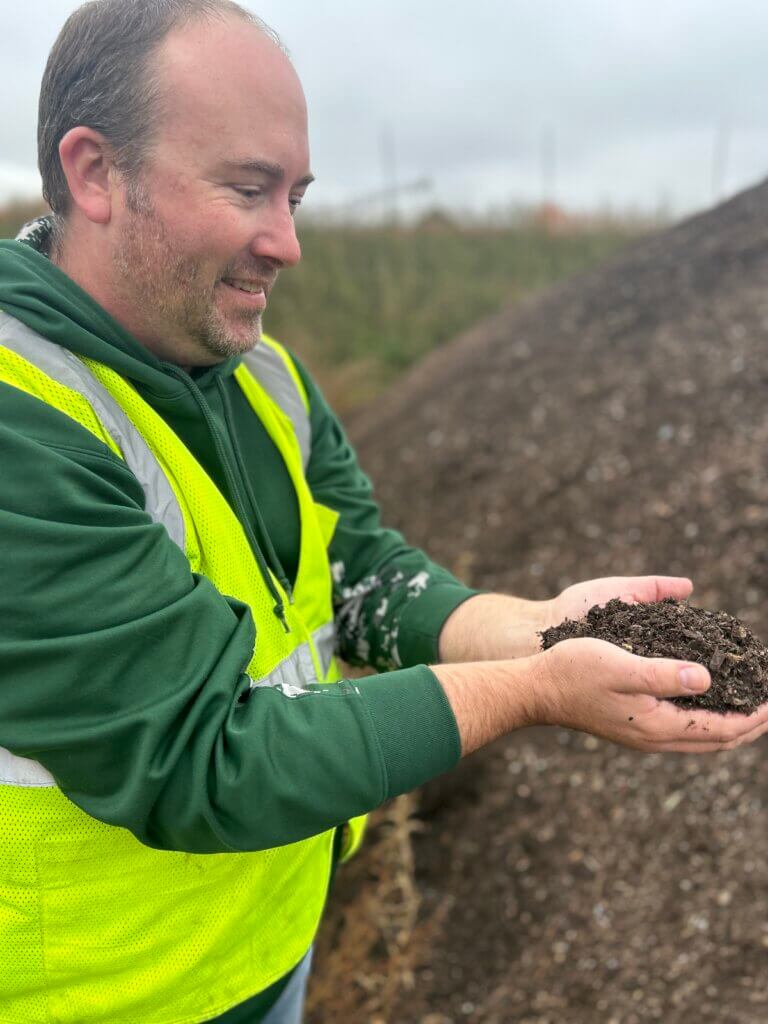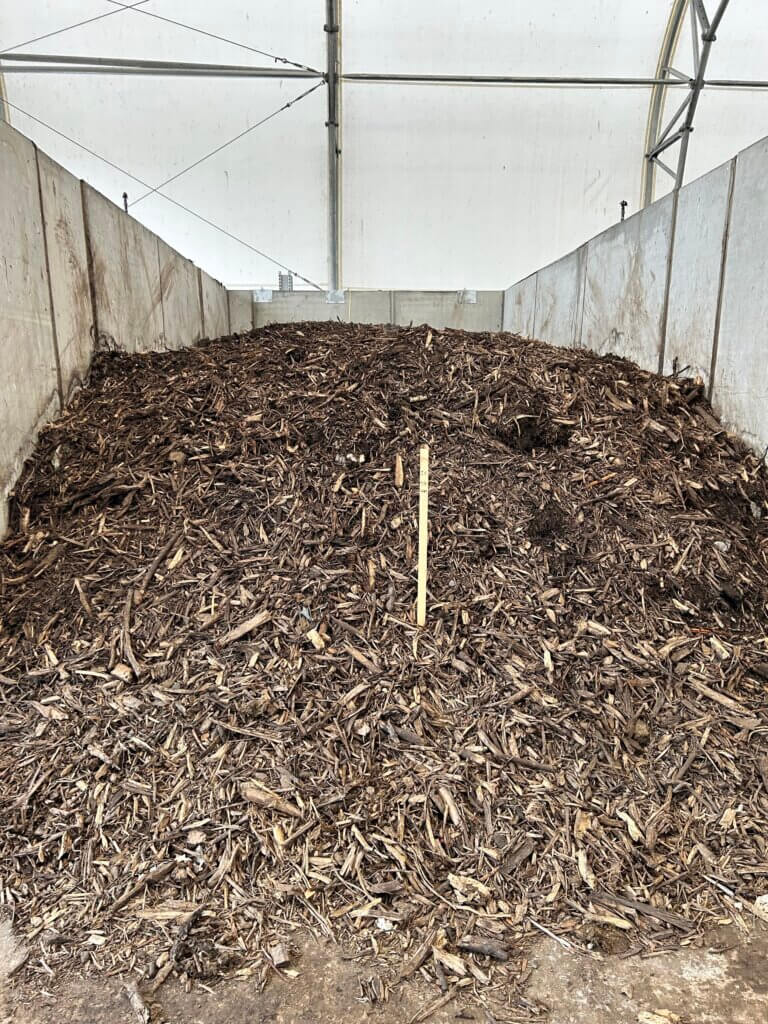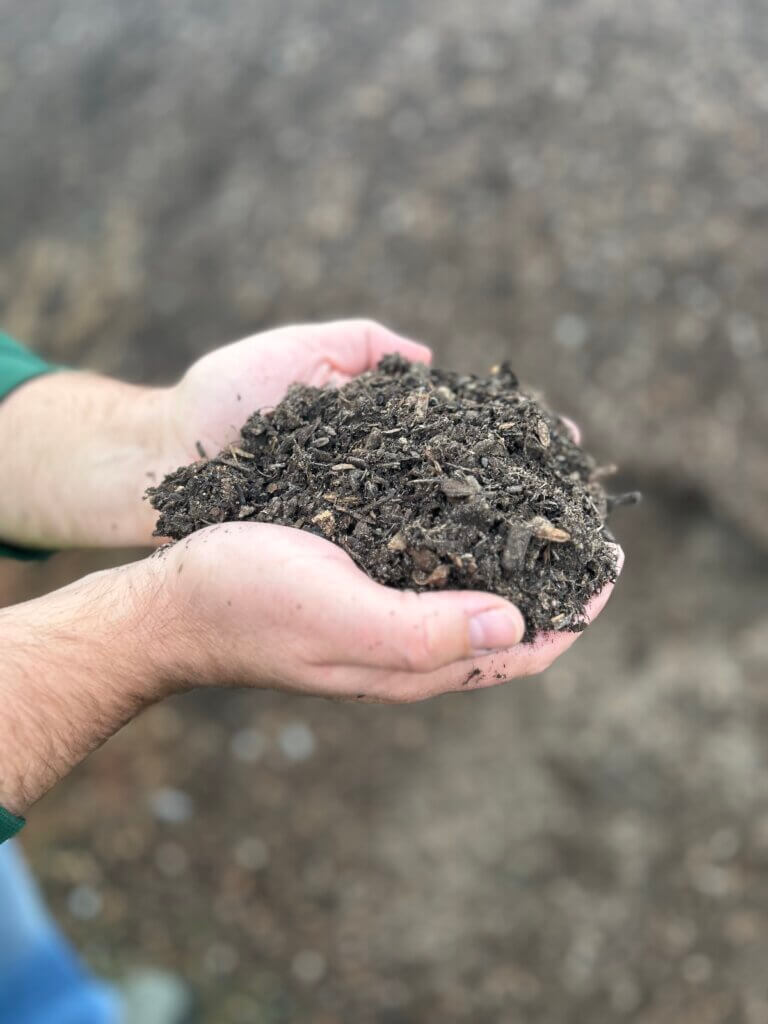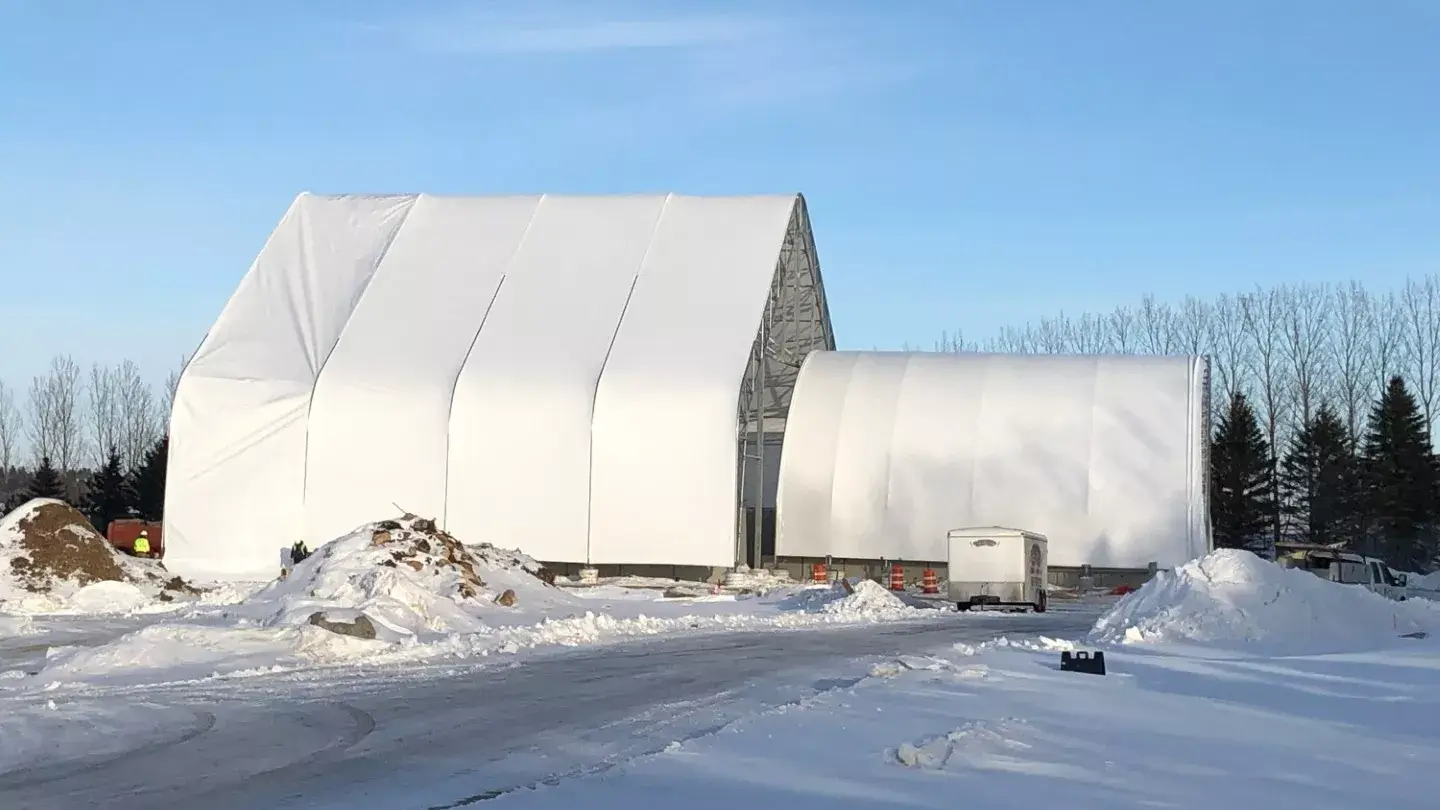Overseen by Pope/Douglas County Solid Waste Management, Glacial Ridge Composting Facility is the region’s large-scale composting site. Composting reduces food waste from schools, businesses, and households.

Minnesotans could have eaten or donated around sixty-two percent of the food they throw out, according to a 2019-2020 study commissioned by the Minnesota Pollution Control Agency. As an alternative to throwing out food scraps, large-scale composting allows schools, businesses, and communities to reduce food waste. Composting has the additional benefits of helping crops and plants grow.
Nathan Reinbold, the Environmental Programs Manager with Pope/Douglas Solid Waste Management (PDSWM), sits on the Minnesota Composting Council’s board of directors, where he serves as an advocate for composting throughout the region. As environmental benefits became clearer, large-scale composting became a cost-effective measure for the region, prompting Nathan and the rest of the staff at PDSWM to look into industrial composting in the region.
A Regional Site
PDSWM has been collecting source-separated-organics from schools and businesses since 2017. This included all food scraps, uncoated paper, and BPI compostable bags and products. At the start of the program, PDSWM brought the organics to Tri-County Organics near St. Cloud. But as the program continued to gain traction, the region needed its own site.
Located near Hoffman, Minnesota, the Glacial Ridge Compost Facility opened in 2022. The facility serves Pope, Douglas, Grant, Stevens, and Otter Tail Counties. The facility is only open for haulers, contractors, and large-scale industrial drop-offs. For residential drop-offs, find a public disposal site here.

How it Happens
Composting creates the ideal conditions for the natural decay/rotting of organic materials. Through aerobic respiration, microorganisms eat the carbon-containing waste, breaking it down into simpler parts. Eventually, the process produces fiber-rich humus. This process also creates heat, so there needs to be an adequate amount of water to regulate temperature.
Minnesota composting regulations require contact water from compost piles to be managed as a potentially environmentally harmful substance. To efficiently meet these regulations, Nathan and other employees at PDSWM decided to work with Engineered Composting Systems (ESC), a company out of Seattle, to develop the Glacial Ridge Compost Facility. ESC designed, supplied, and installed a state-of-the-art bunker-style aerated static pile composting system with a unique cover over the active compost pile that minimizes run-off water.
The ESC CompTroller automates the composting process, optimizing the various variables needed for composting to occur, including automatic aeration and irrigation control. The system is fully web-enabled, allowing workers access to real-time data for adjustment. The CompTroller reduces the amount of guess work, labor, and equipment needed compared to more conventional composting facilities.

The Importance of Composting
Participation in the composting program is voluntary for businesses, schools, and individuals, but Nathan anticipates ordinances will soon become the norm across the region. Updates to solid waste ordinances may require back of house organics recycling, increasing the food waste-to-compost stream. By diverting organics out of the waste stream, PDSWM can process the material at the compost facility rather than landfilling or processing food waste at the Resource Recovery Facility in Alexandria or Perham.
The Minnesota Pollution Control Agency still favors preventing wasted food, food donation, and food-to-animals before composting. But all four of these methods conserve landfill space, reducing methane emissions. Composting has the added benefits of improving soil fertility, conserving water, and reducing erosion. The work done at the Glacial Ridge Compost Facility is a large step forward towards large-scale composting becoming the norm across Minnesota.
About the Author

Brogan Ludwig is the ACC AmeriCorps member for West Central Initiative. His year of service includes working on the Climate Action Newsletter and Climate Action outreach. Brogan graduated from Concordia College in May. He lives outside his hometown, Hawley.
